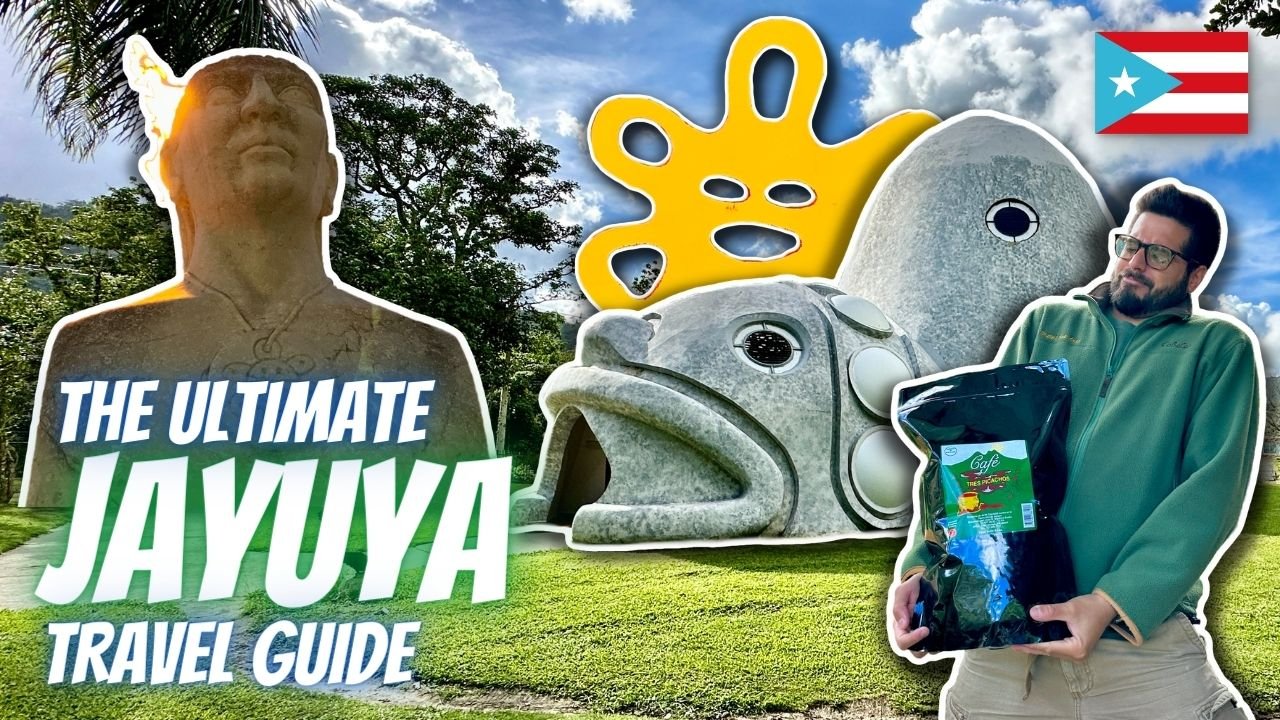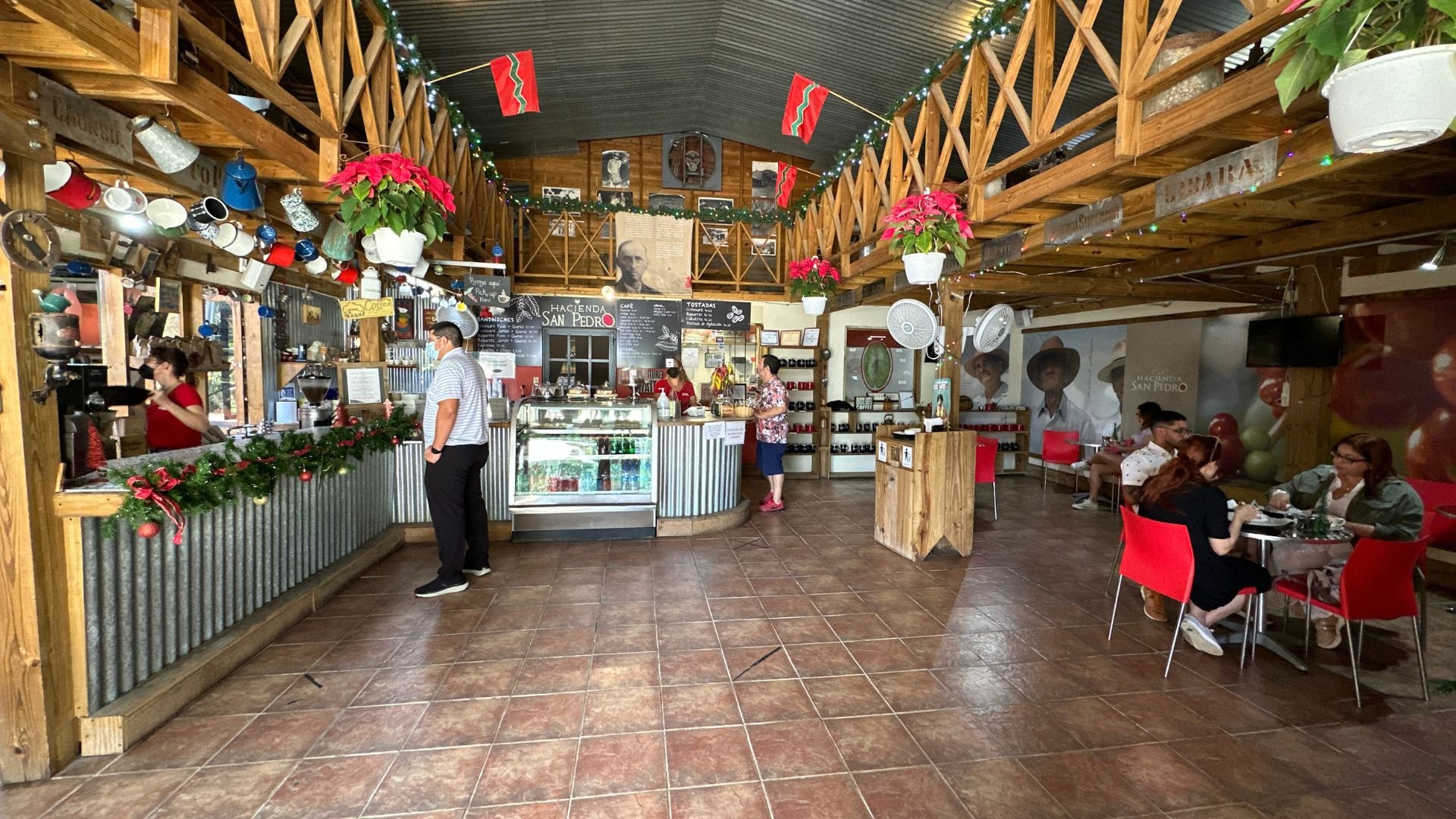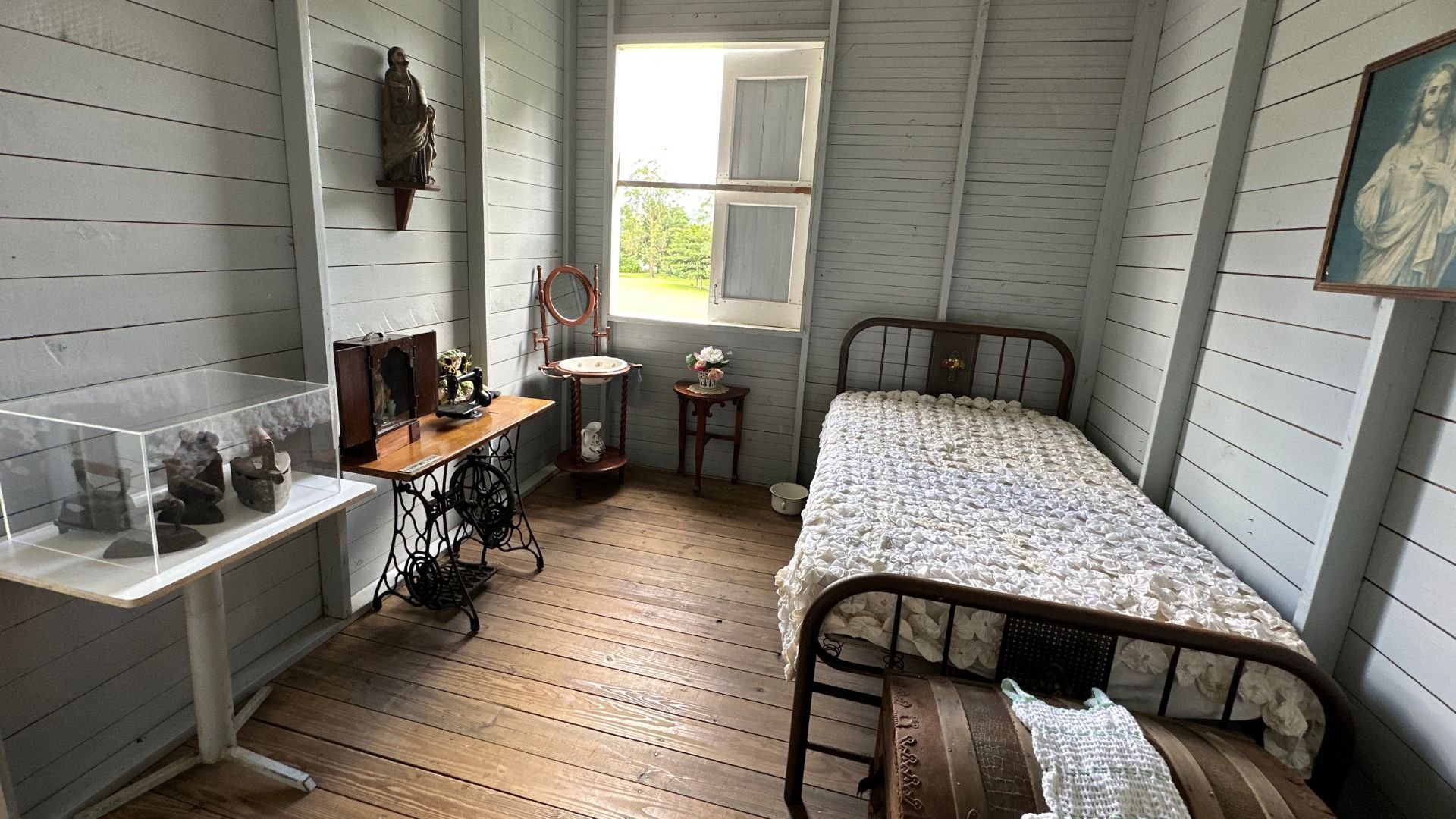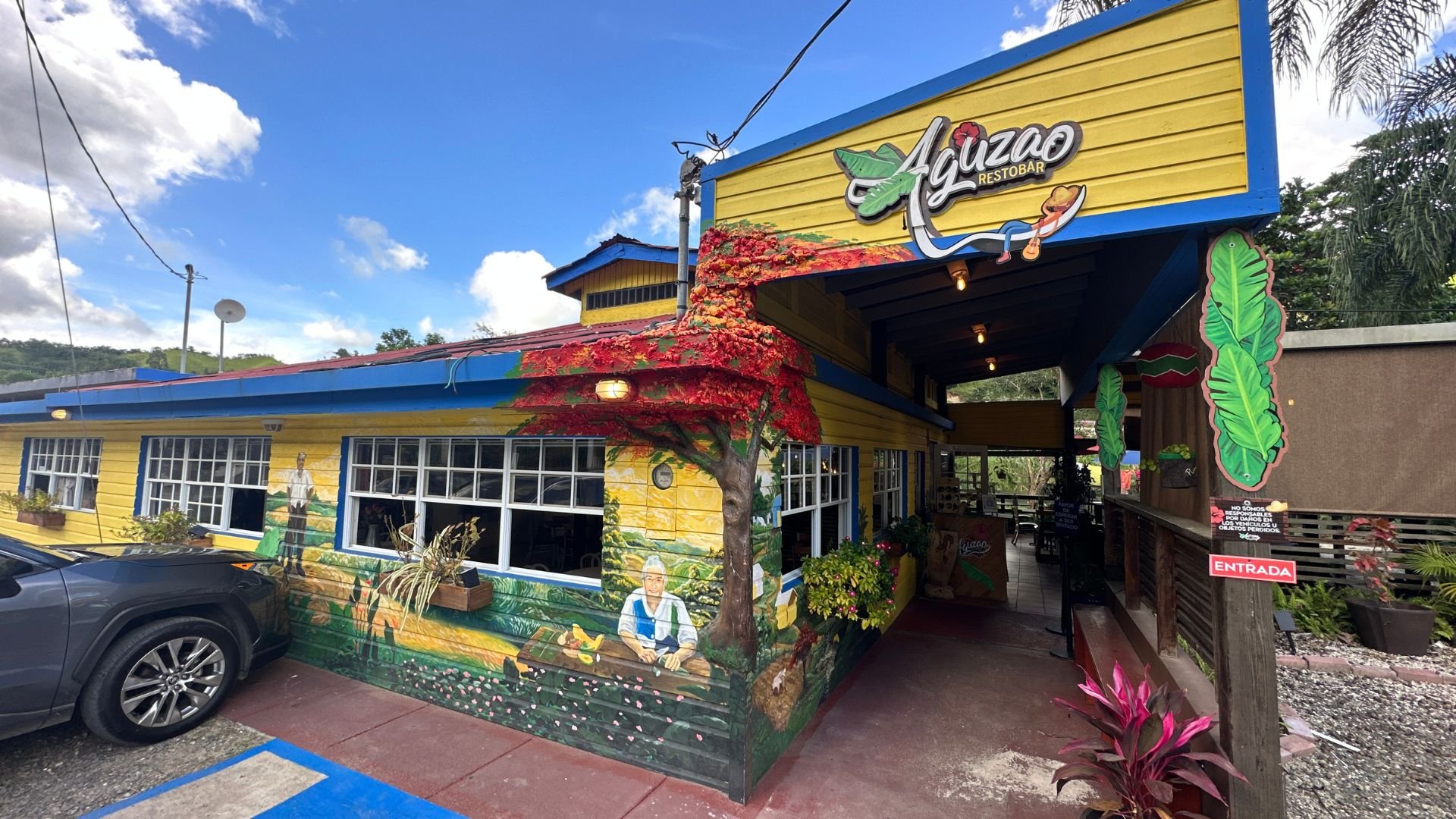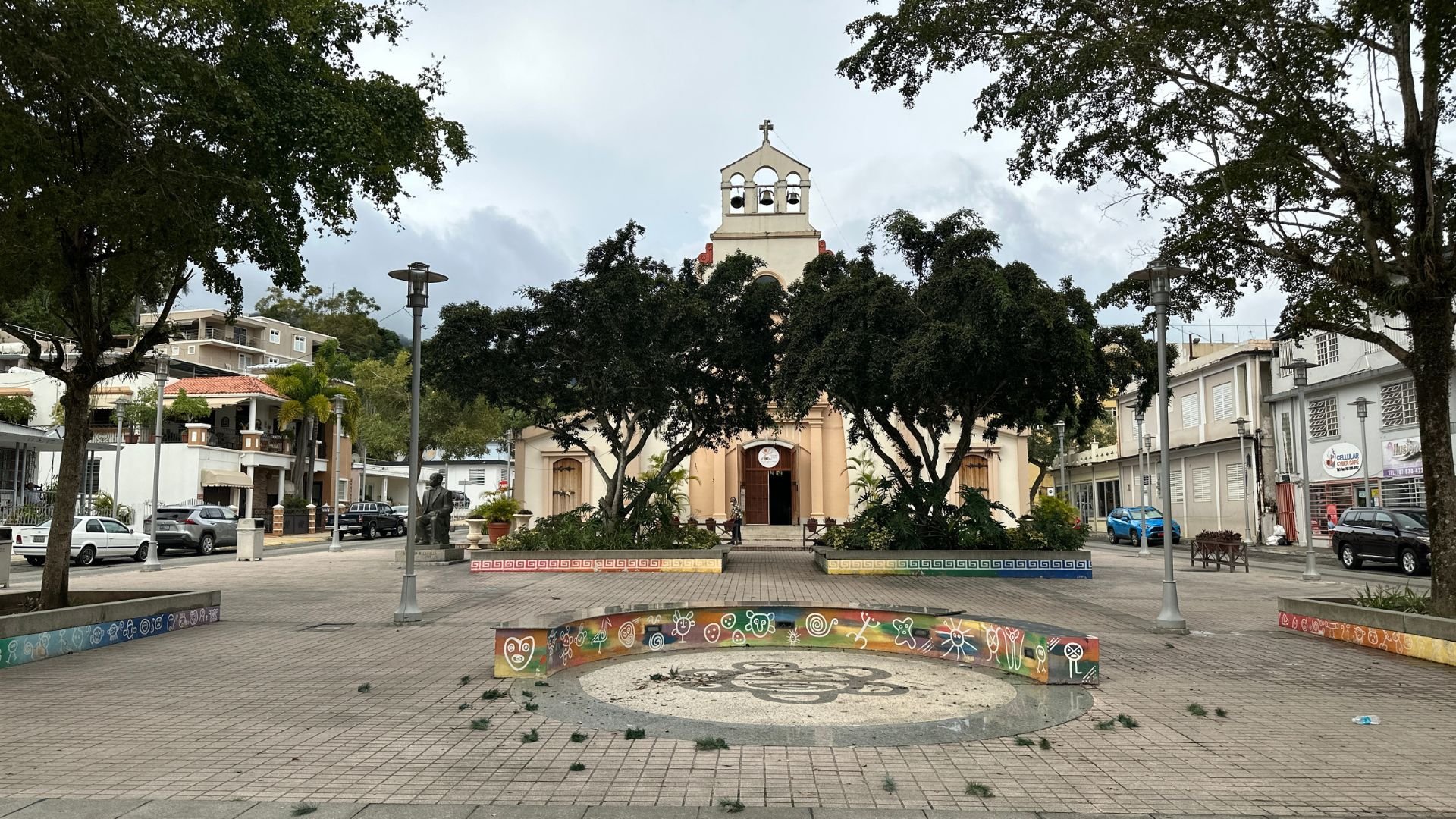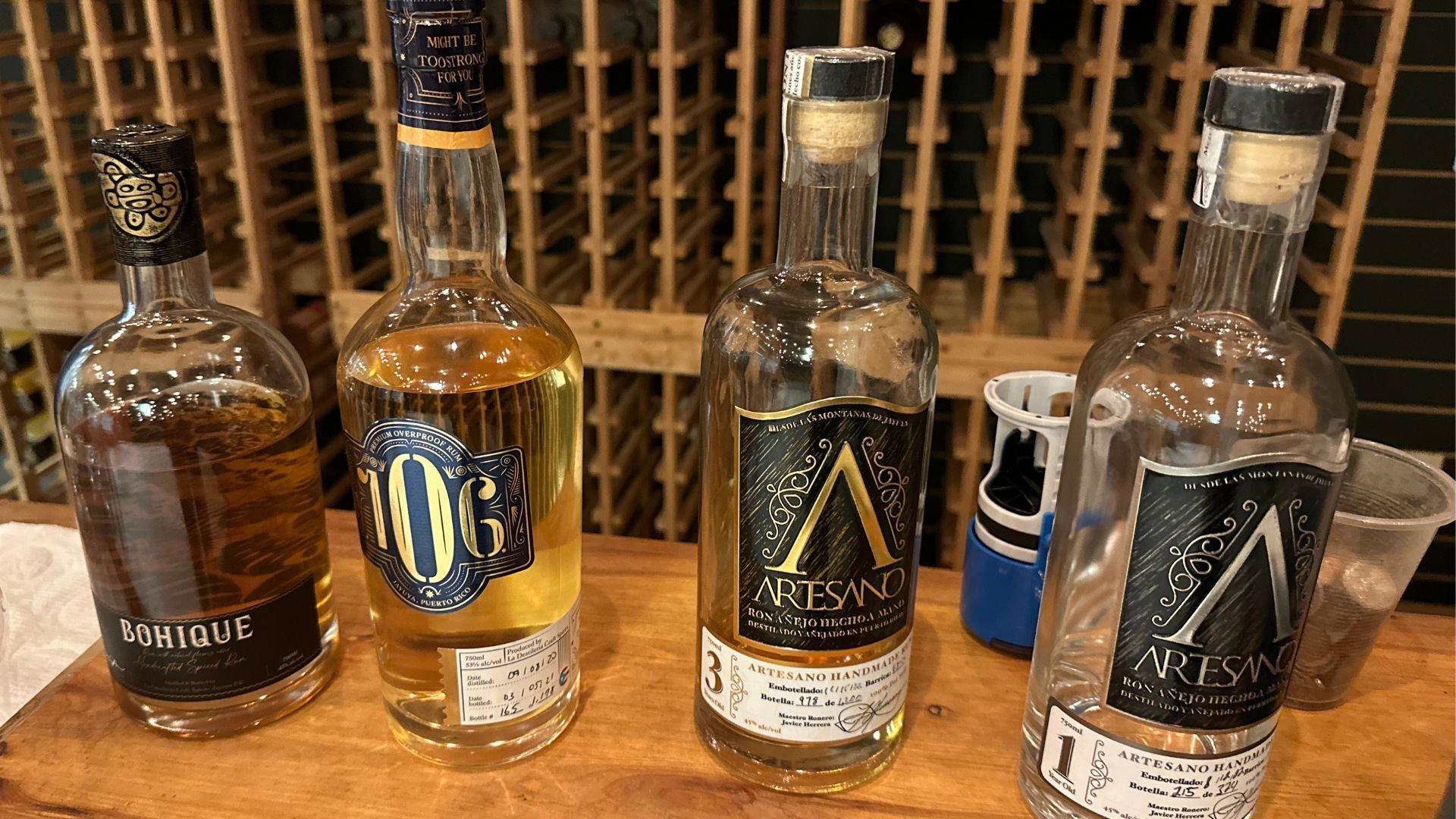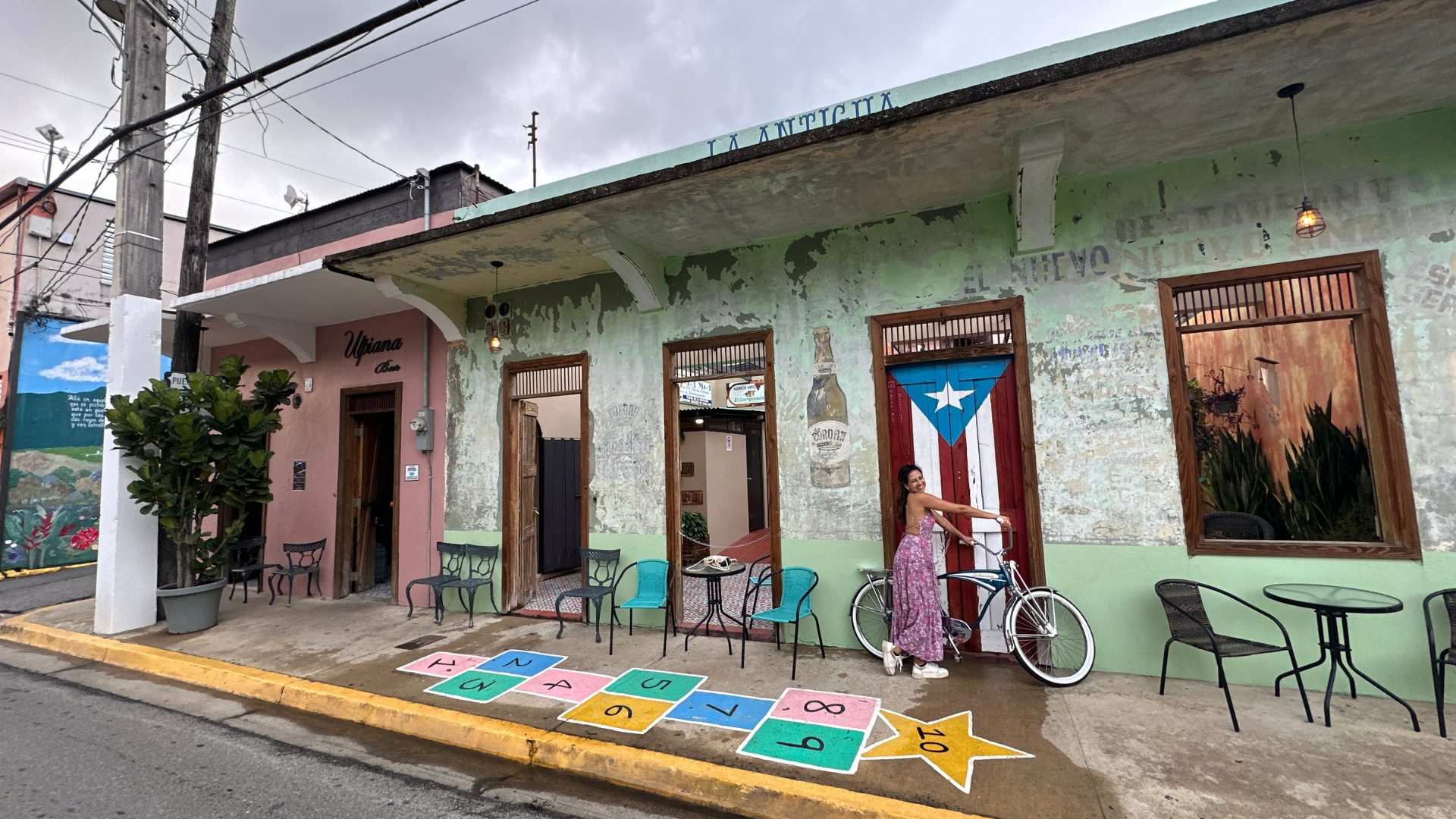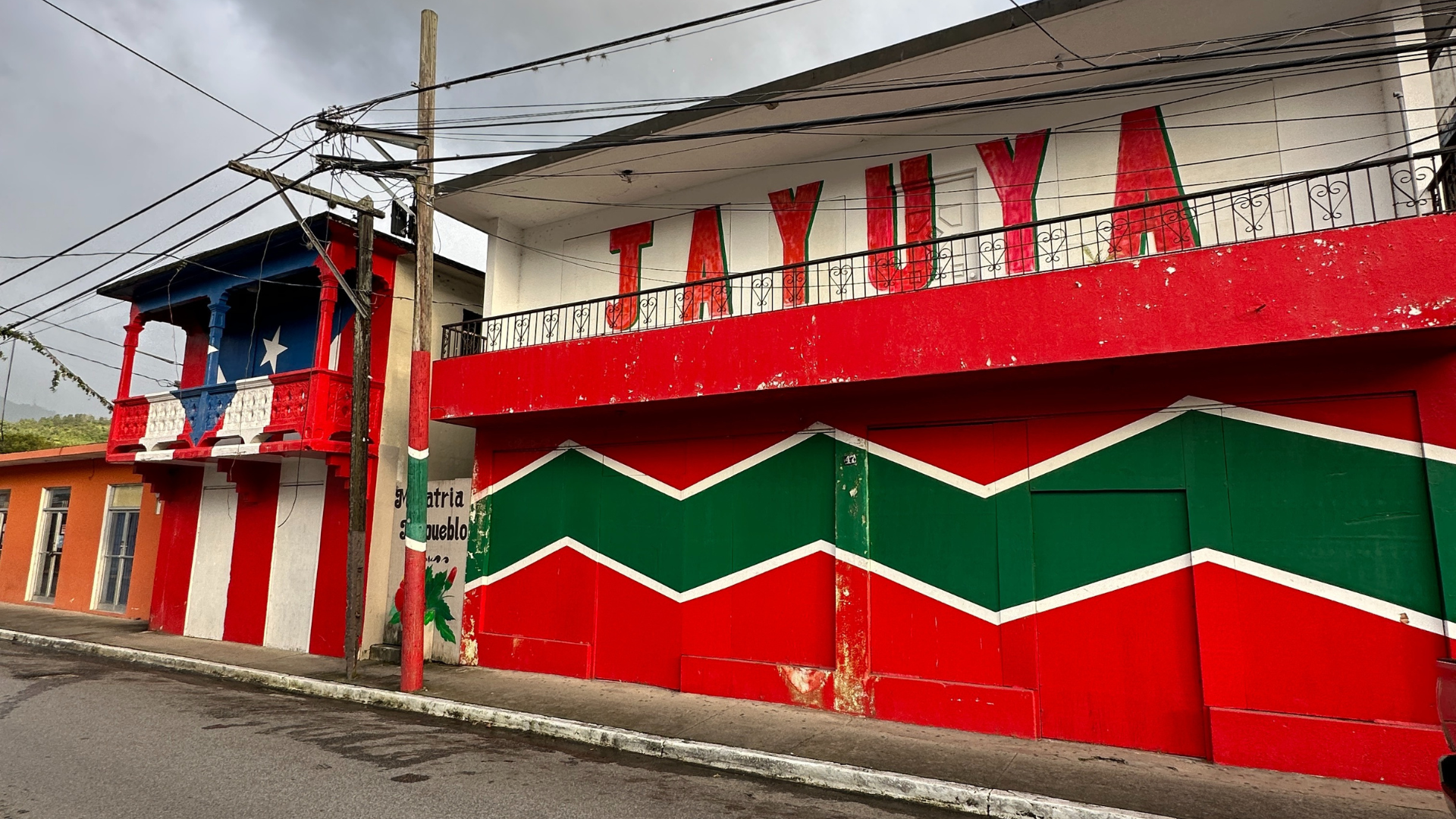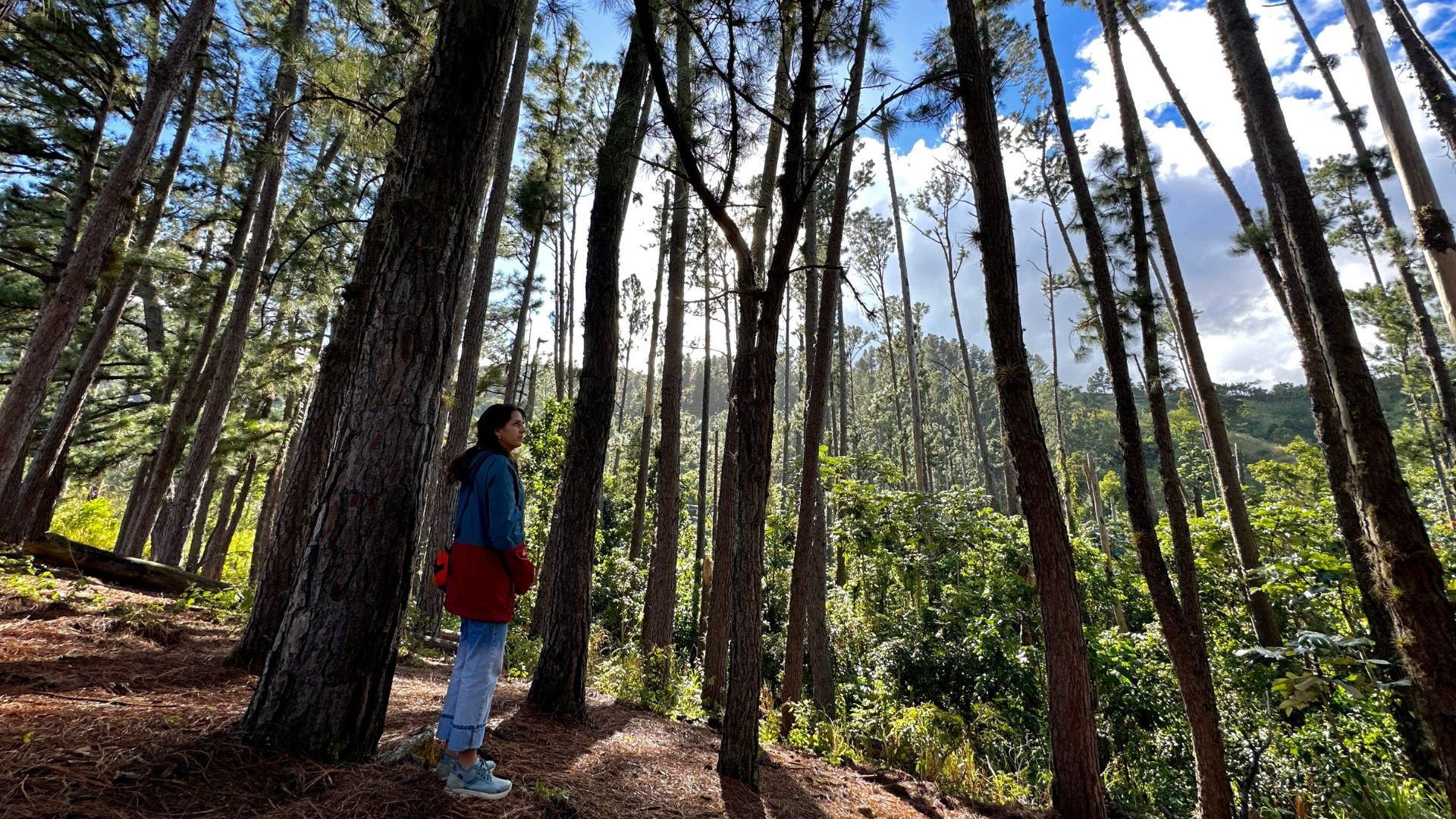The Ultimate Jayuya Travel Guide
Watch Now On YouTube
Jayuya is a historically rich and significant municipality located deep in the mountainous region of central Puerto Rico. It is known for its pristine natural beauty, impressive historic landmarks, and its rich cultural traditions and history which are heavily influenced by the indigenous people of Puerto Rico called the taínos.
HOW TO GET TO JAYUYA
NORTHERN ROUTE TO JAYUYA THROUGH CIALES OR UTUADO
If you are traveling to Jayuya from San Juan, there are two main ways to get there, the north or south route. The northern route, also referred to as the panoramic route, will take you through winding roads full of vegetation and beautiful scenery through the municipality of Ciales. Although this route is the quickest way of getting to Jayuya, taking approximately two hours from San Juan, its winding road might make some people carsick.
SOUTHERN ROUTE TO JAYUYA THROUGH PONCE & ADJUNTAS
For this reason, I recommend that most people take the southern route to Jayuya. This route takes approximately 20 more minutes and takes you through Route 52, a highway that crosses the center of the island through Caguas, Salinas, and eventually Ponce. There, you should take route 10, which leads you back north into the mountains, and eventually to a relatively short and mildly winding road to Jayuya.
Panoramic Route in Ciales
WHAT TO DO IN JAYUYA
HACIENDA SAN PEDRO EN JAYUYA
Our first stop when we arrived in Jayuya was the Hacienda San Pedro. The Hacienda San Pedro is a historic coffee plantation established in the early 1900s that produces artisan coffee using traditional methods passed down from generation to generation. At the Hacienda San Pedro, visitors will not only be able to taste their exquisite coffee completely elaborated at the hacienda but also buy their coffee beans in bulk, as well as other coffee-related souvenirs such as coffee mugs and tote bags.
Hacienda San Pedro
After this, you should walk up to the second floor of the coffee shop to visit their small museum which holds antiquities and tools that were used to elaborate and produce coffee in the early 1900s. This museum provides insight into the history of the coffee industry in Puerto Rico and the life of the farmers who lived and worked on the plantation.
Then, you might want to head outside for some fresh air while you sip on your coffee on one of the seats near their charming artificial lake surrounded by luscious vegetation and full of friendly fishes and turtles. After this, you might want to take a short stroll around their coffee fields and facilities that are open to the public to see their coffee-making process and learn about the tools and techniques used in coffee production. Or you could coordinate a tour for a more in-depth learning experience about their coffee plantation.
Coffee beans in Hacienda San Pedro
MUSEO DEL CEMÍ EN JAYUYA
After this, we made our way to the iconic Museo del Cemí, a museum surrounded by some of the highest mountain peaks in Jayuya, that is dedicated to the preservation and celebration of the Taíno culture, the indigenous people of Puerto Rico. The Museo del Cemí is unique from all the other museums in Puerto Rico because it is shaped to symbolize the cemí, a sacred object carved out of rocks that represent various deities and spirits of the Taíno religion.
Museo del Cemí
For a small fee of $1 per adult and 50 cents for kids, you’ll be able to go inside the Museo del Cemí, where they house a collection of artifacts, weapons, tools, pottery, and other objects used and made by the Taíno people, including pristine examples of cemís. Not only this, but at the Museo del Cemí you’ll be able to see photographs, art pieces, and other architectural details that represent taíno petroglyphs and other aspects of their culture.
Taíno Cemís
MUSEO CASA CANALES
After learning about the Taínos and their cultural heritage, we headed outside of the Museo del Cemí and walked to the Museo Casa Canales. The Museo Casa Canales is a museum and a replica of the home that belonged to Rosario Canales, the first mayor and one of the founders of Jayuya. Inside this beautiful house museum, you will not only learn about Rosario Canales but also about his influential family that played an integral part in the Puerto Rico Nationalist uprising of 1950.
Museo Casa Canales
NATIONALIST REVOLT OF 1950 AND THE GRITO DE JAYUYA
You see, during the years prior to 1950, a nationalist movement gained momentum led by a man called Pedro Albizu Campos. This nationalist movement condemned the colonial status of Puerto Rico and the welfare state relationship that it was developing with the United States. This sentiment was only amplified by the Ley de Mordaza, a law that condemned and criminalized any action or sign of patriotism to Puerto Rico, including possessing the Puerto Rican flag, singing patriotic songs, writing about independence, and gathering with other people to advocate for the independence of Puerto Rico.
Well, in the basement of this very house, this nationalist group, led by Rosario Canale’s daughter called Blanca Canales, held several meetings to discuss and plan for what would be the Nationalist Revolt on October 30th of 1950. Although this uprising occurred in various municipalities around Puerto Rico, Jayuya was the municipality where efforts were the most successful, to the point where the nationalist took control of the municipality.
Items from the Nationalist Revolt in 1950
After having several violent encounters with law enforcement and against all odds, Blanca Canales, the first woman to lead a revolt gains the United States, valiantly climbed atop a building in the city center of Jayuya, raised the Puerto Rican flag, and proclaimed the Republic of Puerto Rico. Though this uprising was short-lived, the actions taken, by Blanca Canales and other brave Puerto Ricans that defended their national identity, were heard around the world and have had a significant impact on our history and patriotic rhetoric years after these events occurred.
Inside the Museo Casa Canales, you will have the chance to see all kinds of memorabilia and items used during the revolution, including photos of Blanca Canales, a purse used as evidence to incarcerate her after the revolt, artwork depicting Pedro Albizu Campos, and bills intended to be the official currency of the Republic of Puerto Rico.
Antiquities at the Museo Casa Canales
In the other rooms inside this house museum, you will see personal belongings of the Canales family including the typewriter used by Nemesio Canales who was a writer and co-founded the newspaper El Día which today is called El Nuevo Dia and is the largest newspaper in Puerto Rico. In the other rooms, you’ll travel back in time and see other items and furniture used during the early 1900s in Puerto Rico.
The Casa Museo Canales is open every day of the week from 10 AM - 12 PM and from 1 PM till 3:30 PM and has an entrance fee of $1.
MUSEO DEL CEMÍ & CASA CANALES CAMPSITE INFORMATION
Also, if you’re looking to visit the Museo Casa Canales during your trip to Jayuya, but don’t know where to stay or you have a limited budget for accommodations, you could consider camping on the grounds where the Museo del Cemí and the Museo Casa Canales are located. To do so, you have to contact the Administration Office during operating hours and reserve your space with a camping request. This request has to be filled one month in advance and the cost for camping on the grounds is $10 per tent per night. For those interested, I’ll leave their contact information below.
Phone: 787-304-1976 ext. 2501
Email: s.salgado@jayuya.puertorico.pr
Email 2: m.gordillo@jayuya.puertorico.pr
LA PIEDRA ESCRITA DE JAYUYA
After visiting El Museo del Cemí and the Museo Casa Canales, it’s time to take a short drive and make an obligatory stop at one of Jayuya’s and Puerto Rico’s most iconic and beautiful archeological sites, La Piedra Escrita. La Piedra Escrita, which translates to “The Written Stone” is an impressively large boulder located in the middle of a river that is unique because it is covered with numerous taíno petroglyphs. To visit La Piedra Escrita you simply park your car in the spacious parking area and walk down the wooden boardwalk that leads you to the riverbed. From there, you can jump straight into the freezing water of the Saliente River and admire La Piedra Escrita which seemingly blocks the flow of the river with its humongous presence.
La Piedra Escrita in Jayuya
Or, you could make your way to the top of the rock to get a closer look at the gorgeous taíno petroglyphs that symbolize aspects of their indigenous culture. The significance of these petroglyphs in telling the story and life of the Taínos and their culture led La Piedra Escrita to be recognized and added to the US National Register of Historic Places in 2003. And not only do you get to come face-to-face with history at La Piedra Escrita, but you also get the chance to have a lot of fun by carefully sliding or jumping into the natural pond created in front of La Piedra Escrita.
Petroglyphs on La Piedra Escrita in Jayuya
AGUZAO RESTOBAR IN JAYUYA
After spending some time swimming around in La Piedra Escrita, it’s now time to get yourself a hefty dinner before continuing your adventure by visiting Aguzao Restobar. This restaurant, located on the same street where you find La Piedra Escrita, is artfully painted and decorated with traditional items and symbols of Puerto Rican culture such as the beautiful Flamboyan. Aguzao has spacious indoor and outdoor seating areas where you will be able to admire the peaceful mountainous landscape of Jayuya and the Saliente River which runs directly behind the restaurant. Here you’ll not only see a traditional kitchen of the early 1900s in Puerto Rico which include calderos or cauldrons used to make delicious Puerto Rican recipes, but you will also see a washboard used during this time to wash clothing in the river.
Aguzao Restobar
Now, when it comes to food, we decided to try two traditional dishes from their appetizer menu. The first was papas rellenas which are mashed and fried potatoes filled with meat. The second dish was barriguitas de vieja which are mashed pumpkin fritters that are soft on the inside, crunchy on the outside, and taste deliciously sweet all around.
As for the main dishes, we went with cubed steak with a side of mashed root crops and also asopao de camarones, a delicious traditional Puerto Rican stew that is made with sofrito, adobo seasoning, rice, and is perfect for the cold weather of Jayuya. We paired these flavorful dishes with one of Puerto Rico’s most iconic drinks, the piña colada, a frozen drink or cocktail made with pineapple juice and cream of coconut.
Traditional Puerto Rican Asopao from Aguzao Restobar in Jayuya
FESTIVAL NACIONAL INDIGENA DE JAYUYA
After this delicious meal, we headed over to the central plaza of Jayuya for the main reason we were in the municipality, to see the Festival Nacional Indigena. The Festival Nacional Indigena is a yearly weekend-long festival held in Jayuya during the month of November that commemorates and celebrates our aboriginal Taíno heritage.
Main Stage of the Festival Nacional Indigena in Jayuya
The festival features a variety of cultural activities, including contemporary and Taino music, dances, and performances. At the Festival Nacional Indigena, you’ll also be able to shop for souvenirs at the artisan fair where you’ll find all kinds of items such as traditional candy, musical instruments, jewelry, and art pieces deeply influenced by our Taino heritage and Puerto Rican culture.
Artisan Fair in the Festival Nacional Indigena
ESCALINATA DE JAYUYA HACIA LA TUMBA DEL INDIO
While you’re here, don’t miss the opportunity to explore the Plaza Publica de Jayuya and all of its monuments and historical buildings. During our time here, we first visited the Escalinata de Jayuya, a colorful stairway decorated with gorgeous mosaics and inscribed with the names of Puerto Rican municipalities that were derived from the Taíno language, including the names of the Taíno tribe chiefs called caciques. And at the very top of this staircase, you will find a bust honoring one of the most important Taíno chiefs, the Cacique Hayuya from which the municipality of Jayuya derives its name. Behind this monument, you will also find the Tumba del Indio, a tomb with the remains of a Taíno resting in a fetal position accompanied by some personal belongings to aid in the afterlife.
Escalinatas in Jayuya
CENTRO CULTURAL DE JAYUYA
After paying respects to the Taino in the Tumba del Indio, you’ll want to continue your way up the rest of the stairs and visit the Centro Cultural de Jayuya. Inside the Centro Cultural de Jayuya, you will find an impressive collection of all kinds of objects representing and pertaining to the Taínos including fragments of ceramics, tools, jewelry, weapons, petroglyphs, religious objects such as the cemí, and also objects pertaining to the pretainos which was the civilization that pre-dated the taínos in the island of Puerto Rico which the Taínos called Boriken. Here you will also see photographs of the past Festivales Indigenas and paintings illustrating the enslavement and furious rebellion by the Taínos to fight against the Spanish colonizers.
Taíno Items in the Centro Cultural de Jayuya
REINADO INDIGENA DE JAYUYA
Now, after visiting these impressive cultural attractions, we went back down to Jayuya’s central plaza to witness what is probably the most anticipated event of the whole festival, the Reinado Indigena. For the Reinado Indígena, students from all around Jayuya and nearby municipalities are tasked with creating extravagant handmade attire inspired by our taíno roots which are artfully made almost entirely with natural materials. In this event, participants parade their intricate and majestic creations on the main stage to be evaluated based on their ensemble, presentation, and performance for a chance to be crowned the Queen of the Festival. I have to say, we were ecstatic and proud to see a multitude of people excited to see the coronation, visit the numerous attractions Jayuya, and preserve our ancestral indigenous heritage in this prominent and influential festival after a two years hiatus due to the pandemic.
Reinado Indigena in the Festival Nacional Indigena in Jayuya
Book a Flight to Puerto Rico!
HACIENDA VICTORIA LUCÍA
On our second trip to Jayuya we decided to stay a weekend in Hacienda Victoria Lucia. This local and family-owned inn used to be the grandiose estate of one of Jayuyas most important doctors back in the day. To me what makes this inn unique is not only the large stones completely covering the exterior of the facilities, but also its breathtaking garden that wraps around the whole property and where you can peacefully spend some time in its different nooks and areas reading a book, meditating, or simply admiring the beautiful mountainous surroundings of Jayuya. Hacienda Victoria Lucía also has other amenities like a refreshing pool to jump into on a hot summer day and a full-sized restaurant called Doña Benita that is the perfect place to have a dinner date.
Hacienda Victoria Lucía in Jayuya
Most rooms are located on the second floor of the building which you can access by going up the main staircase. These rooms are effortlessly decorated to give a sense of peacefulness and if you’re lucky like us, you might receive a small welcome gift and letter from the friendly staff. Also, when making a reservation, be sure to inquire about the availability of their rooms that feature charming balconies with views of the perfectly landscaped garden and the mountains of Jayuya.
Entrance to Hacienda Victoria Lucía
Despite its relatively small size, Hacienda Victoria Lucia isn’t merely a place for sleeping. It’s a place to experience, where you can spend hours walking around searching for unique details hidden all around such as the beautiful fountains, decorations depicting taíno petroglyphs, and its intricate chandelier hanging from the main driveway. We can truly say that we enjoyed our time staying in the Hacienda Victoria Lucía, so if you want a similar experience while visiting Jayuya, I’ll place their contact information below and other alternatives for accommodations in Jayuya.
ACCOMMODATIONS IN JAYUYA
Hacienda Victoria Lucía: (787) 327-6995
Vacation Home in Jayuya: https://expedia.com/affiliate/xhFcQjm
CAFÉ NATIVO
Now, the first stop on our first day in Jayuya was the coffee shop called Cafe Nativo. To get to Cafe Nativo from the main street you’ll need to drive up a steep road that leads you to a spacious parking area. From there, you might need to hop onto one of their off-road karts that take you all the way up to their picturesque cafe nestled on the hillside of their farm. Here, you’ll be seated on their wooden deck overlooking the luscious landscape surrounding the cafe and get the chance to taste their rich 100% locally sourced coffee from Jayuya which pairs perfectly with their delicious brunch options.
Café Nativo Coffee Shop
If you're a coffee lover, be sure to check out their small shop, where you can purchase coffee-themed t-shirts and bags of their locally grown coffee to take home. Then, after finishing your breakfast and before heading back to your car, you might want to walk down the road to explore their cozy seating areas where you can connect to nature and enjoy the sounds of the forest.
Breakfast at Café Nativo
TU CENTRO, JAYUYA TOURISM INFORMATION CENTER
After leaving Cafe Nativo we headed towards the center plaza to visit the tourist information center, Tu Centro, Jayuya. Even though we had visited Jayuya in the past and done our research, we wanted to pass by Tu Centro, Jayuya to get a local’s perspective of what were the best places to see and visit during our trip to Jayuya. At Tu Centro, Jayuya, the friendly staff can also give you up-to-date information and even help you coordinate guided tours of the attractions in the municipality.
Tu Centro, Jayuya Tourism Information Center
At this information center, as well as right across the street, you’ll be able to take photos with colorful paintings and murals depicting the iconic Jayuya flag, some of its most popular touristic attractions, its beautiful landscape, and the symbols used by the Taínos in their petroglyphs and culture.
Taíno Themed Murals Near Tu Centro, Jayuya
PLAZA PUBLICA DE JAYUYA, PUENTE DEL MOSAICO Y PUENTE DE HIERRO
After taking many vacation photos, we decided to take a short walk to see Jayuya’s Center Plaza during the daytime. And we’re glad we did because, without the large crowds of the Festival Nacional Indigena, you can really appreciate the details in this beautiful public plaza including its stunning church, the statue of Nemesio Canales, and the ever-present Taíno symbols, in this case, the sol de Jayuya or the sun of Jayuya. We also took this time to revisit the Escalinatas de Jayuya to see its colorful mosaic brightly shimmering during the daytime.
Jayuya’s Center Plaza
While you’re here, I highly suggest you take a short walk to the Puente de Mosaico, a stunning bridge that connects the central plaza of Jayuya to the neighborhoods on the opposite side of the impressive Rio Grande de Jayuya. As you can see, this bridge is decorated with a colorful mosaic that spans the whole length and depicts the different natural landscapes, rivers, and flora of Puerto Rico. If you like this view, you might also want to take a short walk to visit the Puente de Hierro, an iron bridge located a short walk from the Puente de Mosaico. From here you’ll also have breathtaking views of the city center, the Rio Grande de Jayuya, and the stunning Puente de Mosaico.
Mosaic Bridge in Jayuya
TU BOLERA, JAYUYA
As you can imagen, because of Jayuya’s high altitude and location in the central mountain range of Puerto Rico, it receives a significant amount of rain. So, when it began pouring during our stroll around the central plaza, we decided to do some indoor activities by visiting Tu Bolera, Jayuya, the only bowling alley located in the municipality. Tu Bolera, Jayuya is located a short drive from the central plaza and features modern facilities, 10 bowling lanes, and a dining area that sells delicious Puerto Rican dishes and appetizers. When we arrived, we were surprised to be the first clients of the day, but we were told that during the weekends and at night, this bowling alley does get packed with families and the local bowling league. Tu Bolera, Jayuya is a great place to spend some quality time and get competitive with your friends and family, that is, if you’re any good at bowling, unlike me.
Tu Bolera, Jayuya
RESTAURANTE LA CASONA
Before going to the next activity of the day, we decided to satisfy our hunger at the Restaurante La Casona. This restaurant is located right next to the main road and features a spacious indoor and outdoor seating area. At the Restaurante La Casona they have a varied menu that included many local dishes such as mofongos full of octopus and the delicious asopao de pollo, the same traditional Puerto Rican stew with rice we ate in Aguzao on our first trip, but this time made with chicken.
Restaurante La Casona
LA DESTILERIA CRAFT SPIRITS
After eating that delicious meal, we were ready to have a unique tour of La Destileria Craft Spirits. La Destileria is an award-winning distillery recognized as the first craft distillery on the island. We began our tour in their barrel room where Cesar, a friendly and knowledgeable team member of La Destileria, gave us a brief history of the company's origin back in 2012. Here, Cesar also explained the types of barrels and the lengthy process that they use to age their rum to achieve the perfect flavor, aroma, and color.
Rum Barrels at La Destilería Craft Spirits
After this, we passed to their main production area where we saw all types of equipment used to test and experiment with the spirits they produce and where the large distilling stills are located. Here, Cesar was kind enough to give us an in-depth explanation of their distilling process and how every part of their rum-making equipment plays an important role in creating the perfect end product.
Distilling Stills in La Destilería in Jayuya
And talking about the end product, after the tour of their production facilities, we then had the chance to actually try their rums and spirits in their Tasting Room. Here, we were able to taste their complete and varied portfolio of award-winning high-quality spirits including their Artesano white and aged rum, their Bohique Spiced Rum, and their 106 Strong Rum which is used to make Old Fashions in many famous bars around Puerto Rico such as the world-famous La Factoria in Old San Juan.
Award Winning Spirits Made By La Destilería Craft Spirits
During this tasting, Cesar gave us some important tips and tricks on how to distinguish the differences between each type of rum and encouraged us to analyze the process and ingredients that went into making these craft spirits. The last product that we tasted was their PitoRico pitorro, a Puerto Rican version of moonshine that they produce as their base 106 white pitorro, and also their flavored variations made with natural fruits from Puerto Rico including coconut, passionfruit, and tamarind.
After finishing this tasting, I have to say I’m not surprised that La Destileria’s varied portfolio of high-quality craft spirits has won a combined 14 prestigious medals at the ADI International Spirits Competition and the ASCoT Awards. If you want to book this unique tour or rum-tasting experience by La Destileria in Jayuya you can do it directly on their website.
PROYECTO ULPIANA BAR JAYUYA
After our fascinating tour of La Destileria, we headed back towards the city center of Jayuya to visit a place that many locals recommended, the Proyecto Ulpiana Bar. This incredibly charming bar has a lively outdoor seating area and an indoor area that is characterized by its proud decoration of the deep-rooted nationalist and independence movements in Jayuya and Puerto Rico.
Ulpiana Bar in Jayuya
On the walls, you’ll see books, paintings, and photographs of many notable historical figures of these movements and of Jayuya back in the day. Here, you’ll be able to relax in their mezzanine while reading one of their many books and sipping on their flavorful cocktails surrounded by history.
Mezzanine at Ulpiana Bar in Jayuya
After leaving Ulpiana we roamed around the city center of Jayuya and not only encountered many beautiful murals painted on the sides of buildings displaying the pride that Jayuyanos have for their municipality, but we were also excited and surprised to find plaques fixed on the side of buildings where historical events took place such as this plaque where Blanca Canales raised the Puerto Rican flag for the first time and proclaimed the republic of Puerto Rico, as well as this other plaque on this building that used to be a US Postal Office that was burned down by the nationalist in the Revolt of 1950 as a form of protest against the presence and influence of the US in Puerto Rico.
Murals Near Ulpiana Bar in Jayuya
If you want to read these plaques and visit these historical places for yourself, I’ve placed their location below so make sure to check that out when visiting Jayuya.
Coordinates for the plaque where Blanca Canales raised the Puerto Rico flag for the first time: 18.218751, -66.591396
Coordinates for the plaque on the US Postal Office burnt down during the Nationalist Revolt of 1950: 18.218934, -66.591108
RESTAURANTE DOÑA BENITA
After an extremely long, tiring yet exciting day in Jayuya, we went back to our room at Hacienda Victoria Lucía to take a shower, rest and dress up to have a romantic dinner date at their in-house restaurant, Restaurante Doña Benita. Located just a few steps away from our room, Restaurante Doña Benita is the perfect place to try traditional Puerto Rican dishes and appetizers such as queso frito or fried cheese with guava sauce, and trifongo, which is a mofongo made with green plantains, ripe plantain, and yuca.
Restaurante Doña Benita in Hacienda Victoria Lucía
After this delicious meal and sweet chocolaty dessert, we decided to take a quick stroll around Hacienda Victoria Lucia’s beautifully dim-lit garden to relax and take in all the unforgettable memories we had created on this jam-packed day at the incredible municipality that is Jayuya.
Hacienda Victoria Lucía’s Garden at Night
CAFÉ HACIENDA TRES PICACHOS
As the sun started to rise, we began the last day of our trip in Jayuya by visiting Café Hacienda Tres Picachos. Originally established in 1960, the Hacienda Tres Picachos is one of the oldest coffee brands still in production in Puerto Rico. As soon as you step foot inside their property you get a sense of going back in time to a traditional coffee hacienda with its huge and impressive water mill, a traditional white horse carriage, and even a small museum that holds antiquities such as farming tools, traditional record players, old radios, and even artifacts belonging to the Taínos and other indigenous civilizations of Puerto Rico.
Antiquities in Hacienda Tres Pichachos
The Cafe Hacienda Tres Picachos has a cozy and spacious indoor dining area, but we opted to sit outside on their chilly wooden deck to have a cup of their flavorful locally grown coffee and some delicious breakfast accompanied by a breathtaking view of the surrounding mountains and their coffee plantation.
Coffee Shop at Hacienda Tres Pichachos
After finishing our breakfast which included a tasty ham sandwich, omelet, hash browns, natural orange juice, and a sweet coconut cream maicena or cornstarch, we headed outside to visit their gorgeous hanging bridge which offers a spectacular view of the river that crosses through their property and that provides vital nutrients to their crops. If you visit the Hacienda Tres Picachos during Christmas time or even during Valentine's Day, you might be lucky to find it completely decorated with lights and other ornaments, making this a perfect spot to take photos and videos to share with friends.
Hanging Bridge at the Café Hacienda Tres Pichachos
After this, we continued exploring the immediate grounds of their hacienda where we saw sacks of freshly picked coffee beans that seemed to be ready for processing, humorous guinea fowls roaming around their property as well as some absolutely gorgeous peacocks with spectacular bright and shimmering feathers and even an extremely rare white feathered albino peacock. And finally, before heading out to our next destination, we made sure to pass by their small shop and souvenir area where they sell coffee mugs and coffee bags in various sizes, ranging from 2oz all the way up to a whopping 5-pound bag, perfect for coffee lovers like me! Just keep in mind that you might have to place larger coffee bags inside a checked bag if you’re traveling back home by plane.
Exterior Seating Area at the Hacienda Tres Picachos Coffee Shop
MUSEO DE NUESTROS MARTIRES
After a short drive from the Hacienda Tres Picachos, we arrived at the Museo de Nuestros Martires, a museum with the purpose of celebrating and remembering those who have fought for the liberty and rights of the Puerto Rican people throughout time.
This beautiful museum nestled in the colossal mountains of Jayuya is actually the home of Cobí Dávila, a proud Jayuyano who lived through and had family members who participated in the Nationalist Revolt of 1950. Cobí was kind enough to give us a walkthrough of the museum to show us the collection of numerous photographs, posters, illustrations, and other historical items from different moments in history when the Puerto Rican people fought for their rights and freedom.
Museo de Nuestros Martires
Here, we learned about the Puerto Rican independence movement against the Spanish rule that eventually led to the Grito de Lares uprising of 1868, the horrific moments where Puerto Ricans lost their lives during the Masacre de Ponce and the Masacre de Rio Piedras, we saw photographs of important historical figures such as Pedro Albizu Campos, Blanca Canales, and other Puerto Rican revolutionaries, and we even saw posters of the protests in the island municipality of Vieques against its occupation and bombardment by the US Navy, a story that I covered in my Ultimate Vieques Travel Guide.
Cast of the Face of Pedro Albizu Campos at the Museo de Nuestros Martires
Without a doubt, the Museo de Nuestros Martires is a mandatory stop for those wanting to learn about the history of Puerto Rico, especially parts of our history that have been deliberately disregarded and ignored but that have had an immense impact on our current political, cultural, and socioeconomic situations.
NATUROLA LA BARRA
After this impressive history lesson at the Museo de Nuestros Martiers, we hopped back into our car and drove to another place that was recommended to us several times called Naturola La Barra. Naturola la Barra is a charming bar secluded deep in the mountains of Jayuya, making it the perfect place to disconnect, come closer to nature, and momentarily enjoy living a simpler life.
Naturola La Barra in Jayuya
At Naturola la Barra you can enjoy eating authentic Puerto Rican fried fritters such as bacalaitos and alcapurrias which are cooked in their rustic kitchen area and fogón placed near the creek that runs next to their property. Here we decided to eat some of their delicious barriguitas de vieja, chicken and beef empanadillas, drink their fruity mojitos, and taste their juicy sliders with sweet potato fries and mayo ketchup.
BOSQUE DE LOS PINOS DE JAYUYA
After enjoying the silence and looking out towards the luscious green landscape surrounding Naturola la Barra, we decided to pay a visit to the Bosque de los Pinos in Jayuya. This pine tree forest, located just a short walk or drive away from Naturola la Barra, is the perfect place to immerse yourself in nature, enjoy the presence of the colossal pine trees, and listen to the sound of the forest, birds chirping and the soothing rustle of the leaves. This serene and tranquil forest creates the perfect environment to relax and reflect on the great memories you’ve created during your trip to this wonderful municipality.
Pine Tree Forest in Jayuya
BODEGA DE LAS BRUJAS
But, before heading out of Jayuya we needed to make one last stop at the themed bar called la Bodega de las Brujas. Based on the exterior of this bar, it might seem like just another ordinary chinchorro in the mountains of Puerto Rico, but as soon as you step foot inside, you’re transported to the magical world of witches and wizards that will leave you spellbound.
Gift Shop at the Bodega de las Brujas in Jayuya
La Bodega de las Brujas is completely adorned with eclectic decor such as brooms, owls, and candles seemingly levitating in the room, creating an environment similar to what you would see in a Harry Potter movie. Here you will not only get to try their spellbinding elixirs and potions concocted by their experienced mixologists, but also shop at their bewitching gift shop where they sell all kinds of mystic items such as crystals, candles, incense, clothing with witchy graphics like the crescent moons and black cats, and other curiosities.
So, if you love magic and are drawn to the mysteries of the occult and the power of witchcraft, you most definitely need to visit La Bodega de las Brujas and let yourself be enchanted by this magical-themed bar in Jayuya.
CONCLUSION TO JAYUYA
As our time in Jayuya came to an end, we couldn’t help but feel a sense of wonder towards this amazing municipality. Jayuya is the type of place where every corner, street, river, mountain, and person holds an incredible story from our past as a nation. This is a place where you might unknowingly pass by an unassuming building without realizing the profound importance it had at some moment in time. A place with pristine natural landscapes that were sacred to our indigenous Taíno ancestors whose traditions, history, and culture live on to this day thanks to the determination and dedication of the people of Jayuya. A place that played a monumentally important role in our history and shaping the Puerto Rico we live in today. And a place that surpassed our expectations and captivated our hearts.
Support My Work
If you'd like to support my work, you could make a small one time or monthly donation on Buy Me A Coffee! These donations, as small as $5, help me improve the quality of my travel guides and allow me to continue making free content to help people explore Puerto Rico.

